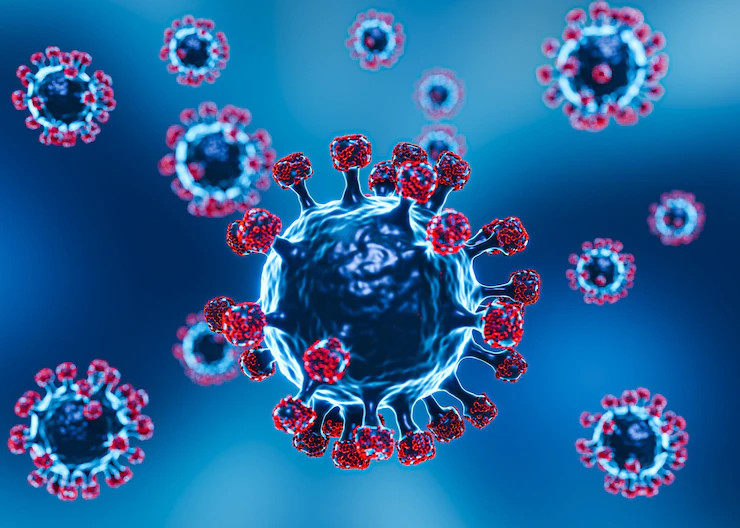Bacterial and viral infections are among the most common causes of illness, with symptoms that can range from mild to severe. Without proper treatment, some infections can lead to severe, life-threatening conditions. Understanding the differences between these infections and how to treat them is crucial.
What differentiates bacterial and viral infections?
Causes
The main difference between bacterial and viral infections lies in their origins. Bacterial infections are caused by bacteria, which are single-celled microorganisms that can survive inside and outside the body. Most bacteria are harmless, and some even play a helpful role in digestion.
Examples of bacterial infections include:
- Food poisoning: caused by Campylobacter and Salmonella
- Pneumococcal diseases: such as ear and sinus infections, and some types of pneumonia
- Bacterial vaginosis: an overgrowth of bacteria in the vagina
- Sexually transmitted infections: like chlamydia and gonorrhea
- Strep throat
- Urinary tract infections (UTIs): often caused by E. coli
On the other hand, viral infections are caused by viruses, which are tiny germs that need a living host to survive and multiply. Viruses are much smaller than bacteria and consist of genetic material wrapped in a protein shell. Once inside a host, viruses can damage, kill, or change the cells they infect.
Examples of viral infections include:
- COVID-19: caused by the SARS-CoV-2 coronavirus
- Chickenpox: caused by the varicella-zoster virus
- HIV: caused by the human immunodeficiency virus
- Common cold: caused by various viruses, including rhinoviruses
Transmission and Prevention
Bacteria and viruses can spread from person to person in several ways:
- Direct contact: If an infected person doesn’t wash their hands, they can transfer bacteria and viruses to surfaces and food
- Droplets: When someone with an infection coughs, sneezes, or talks, they can expel bacteria or viruses. Breathing in these droplets can lead to infection
- Wounds: Bacteria and viruses can enter the body through cuts or punctures
To prevent transmission, you can adopt a healthy lifestyle such as:
To prevent infections:
- Wash your hands regularly with soap and water
- Cover your mouth and nose when sneezing or coughing
- Get vaccinated
- Eat well-cooked, hygienic food
Treatment
Bacterial and viral infections can sometimes have similar symptoms, like fever, cough, sore throat, and body aches. Because of this, people might think both types of infections can be treated with antibiotics, but that’s not the case.
Doctors can prescribe antibiotics to treat bacterial infections, which are effective at killing the bacteria that cause the infection. It is important to complete the entire course of antibiotics, even if you begin to feel better, to prevent antibiotic resistance, in which bacteria become resistant to the medication.
Antibiotics are not effective against viral infections. Some viral infections can be treated with antiviral medications, but only for certain viruses. In most cases, viral infections are self-limiting, which means they resolve on their own. Treatment usually focuses on symptom relief, which includes rest and plenty of fluids.
While bacterial and viral infections can have similar symptoms, they require different treatments. If you are feeling unwell, you should see a doctor to get the proper treatment.
If you need medical advice or consultation, you can either visit a doctor or make use of the consultation features that are available in the Ai Care application by downloading the Ai Care application from the App Store or Play Store.
Looking for more information about other diseases? Click here!
- dr Nadia Opmalina
Health Direct. What is the difference between bacterial and viral infections?. Available from: https://www.healthdirect.gov.au/bacterial-vs-viral-infection#
Seed, S., Ansorge. R. (2024). Bacterial and Viral Infections. Available from: https://www.webmd.com/a-to-z-guides/bacterial-and-viral-infections
Bacterial vs. viral infections: How do they differ?. Available from: https://www.mayoclinic.org/diseases-conditions/infectious-diseases/expert-answers/infectious-disease/faq-20058098
Cherney, K. (2023). What’s the Difference Between Bacterial and Viral Infections?. Available from: https://www.healthline.com/health/bacterial-vs-viral-infections
Giiorgi. A. (2022). Viral vs. Bacterial Infection: What’s the Difference?. Available from: https://www.verywellhealth.com/viral-vs-bacterial-infection-what-s-the-difference-5442997












